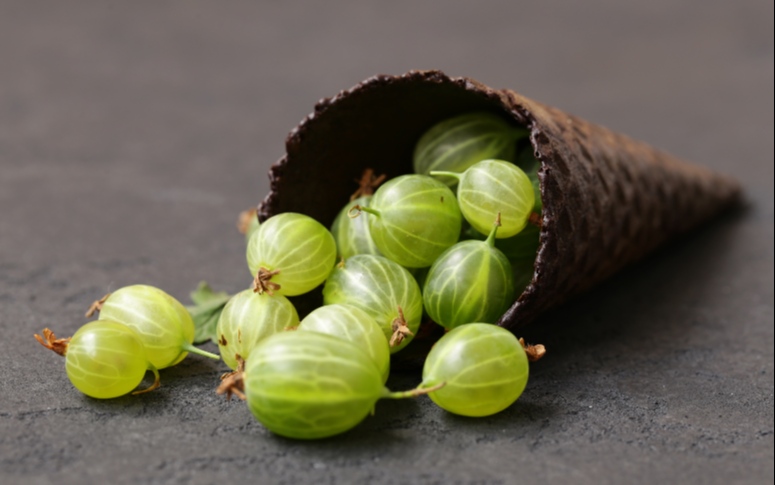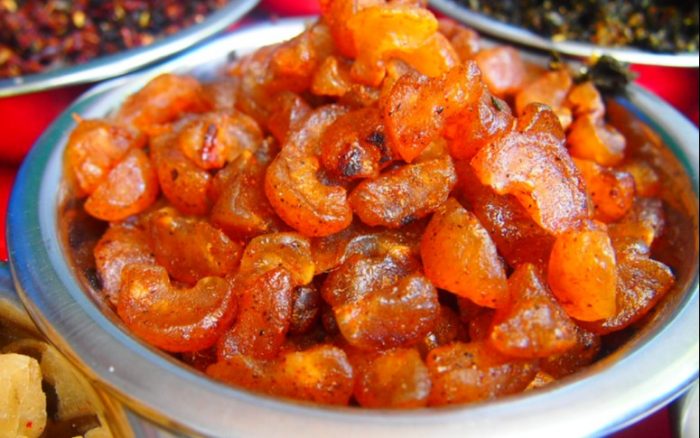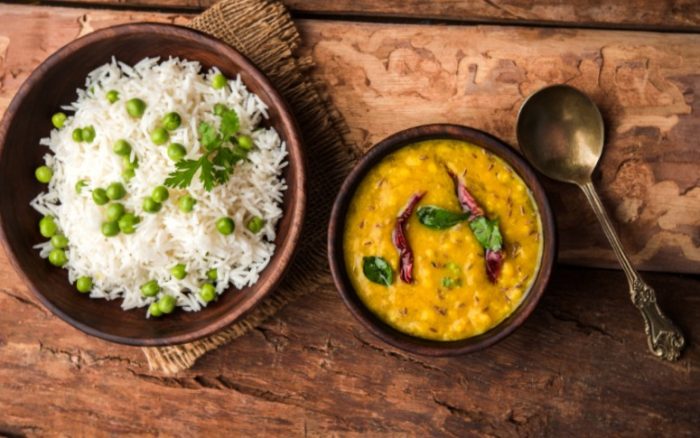Amla Season Is Here & There's Nothing Better Than This Pickle
- By Shreya JalavadiaLoading...
- | 12 Jan 2020 11:46 AM IST
 X
X
If ketchup, mustard or mayonnaise are essential condiments to an American meal, a regular feature on the Indian dining table is the quintessential achaar or pickled foods. With as many variations as there are communities in the subcontinent, each pocket of the country boasts its own variety of achaar, local vegetables pickled in tantalising flavours and bottled in jars to be savoured over months and long distances.
While achaar is an Indian culinary tradition that goes back centuries, the new food trend-following generation believes achaar is unhealthy. Right at the start of our conversation, Prabha Aunty clears the air and says, "Pickling is a mere food preservation technique." Earning a bad reputation for its high salt and oil content, she explains, "To preserve food items for a long duration, you need to add a large amount of salt or oil. Besides, pickle is only eaten as a condiment & in small quantities."
Image Source: www.wikipedia.org
Legacy of Pickles
Almost every Indian family has a pickle tradition to boast of about. For many of us, summers meant watching our mothers and grandmothers prep for the pickling season. But, to make an Amla pickle, you don't really have to wait for summer. Winters are perfect as the Amlas are in season. It all starts with cutting and chopping large quantities of produce, drying them on terraces followed by marination and pickling.
Every household has its own signature pickle recipe and achaar-making technique which generations have grown up relishing. "I grew up watching my grandmother make pickles and I learnt to make this Amla pickle recipe from my mother," says Prabha Aunty, who has been making not just amla (or gooseberry) pickles but many other types for 15 years. "My mother never made pickles but taught me how to make them" she adds, laughingly.
Raw mango pickle and jackfruit pickle are the other pickles that are commonly devoured in a typical Mangalorean household, informs Prabha Aunty. "My family moved to Mumbai a long time ago so we don't eat jackfruit as much here but back home, it's a common feature of our daily meals."
Pickling Hobby
Not a huge pickle fan herself, Prabha Aunty enjoys making pickles for her loved ones. "Even while growing up, I did not eat pickles that much but because my father was a huge fan of pickles, we always had some pickle in our house. Now, my husband is very fond of amla pickle so I have to keep replenishing the stock every time the jar is wiped clean."
Pickles are not just for the eaters but the makers too. For many, the process of pickling is a therapeutic hobby in itself. "I like to make the pickles as soon I see the earlier stock nearing the bottom of the jar," confesses Prabha Aunty. It's not just amla pickle that's popular in her home, every pickle has its own taker. "My children are fond of chilli pickle so I'm regularly refilling those jars as well."
Also Read: How To Make Nellikai Oorugai Recipe
Product of GSB Mangalore
When we asked Prabha Aunty why she chose the amla pickle recipe to represent Karnataka, she tells us, "This pickle is found in households across Karnataka and is a part of almost every meal."
But it's not just that, the amla pickle recipe is one that's regularly made in Prabha Aunty's home from scratch. "We belong to a community called Goud Saraswat Brahmins from Mangalore so this pickle is not that easily available in the market. And somehow, even if you do manage to get your hands on it, it won't have the authentic taste," she informs. "The amla pickle recipe I am making on the show is special because in this pickle recipe, I roast the amlas with a mix of spices till they are dark brown. I use lesser oil compared to other pickles and instead of sugar, I use jaggery."
Defying Unhealthy Notions
Prabha Aunty has another significant reason for picking the amla pickle recipe for us. "Today's generation wants to stay a mile away from aachar ki barnis because they think the excess oil and salt will make them prone to acne or weight gain," laments Prabha Aunty and continues, "I wanted to bring this amla pickle recipe to the limelight because it defies all the notions of pickles being unhealthy. Amlas are nutritious in their own right and are a great source of Vitamin C and as I mentioned before, I use very little oil in my recipe."
Also Watch: How To Make Your Meal-Time Better With This Chutney Recipe
Pickle Partners
While you can enjoy this amla pickle with almost any Indian meal, Prabha Aunty's favourite combination with her amla pickle is "curd rice and dal rice". Just a spoonful of the tangy and sour amla pickle takes these classic comfort food meals to the next level."You can also have it for breakfast with upma, dosa or a simple paratha," she recommends.
Image Source: www.shutterstock.com
Not Rocket Science
You may presume that pickle-making is a time-consuming process but Prabha Aunty says, "This amla pickle recipe is quick and easy to make as the recipe calls for just 3 to 4 ingredients." Plus, it can be frequently savoured thanks to its low oil content. Prabha Aunty usually uses coconut oil for this amla pickle recipe but she says "a good mustard oil will also do the trick".
Watch Prabha Aunty makes an authentic Karantaka Amla Pickle Recipe in our studio.
Ingredients:
1/2 kg Amla (Gooseberries)
Salt To Taste
15-20 Dried Red Chillies
1 tbsp Mustard Seeds
1/2 tsp Fenugreek Seeds
2 tbsp Emami Healthy & Tasty Kachchi Ghani Mustard Oil
1 tsp Mustard Seeds 1 tbsp Hing Powder
Method:
1. Take a bowl of chopped amla (gooseberries), remove it seeds and wash it. Let it dry.
2. Add salt to the amla bowl and mix it.
3. Turn on the gas and add dried red chillies and roast it for some time. Take it on in a bowl.
4. Take the same pan, add mustard seeds and dry roast this as well. Once done add it to the bowl containing the red chillies.
5. Now add fenugreek seeds in the pan and roast it till it turns slightly brown.
6. Add it to the red chillies and mustard seeds filled bowl.
7. Take all of them to grind in a mixer jar.
8. Add the mixture to the bowl filled with amla and mix it together.
9. Now to prepare the tempering, add mustard oil in a small pan and wait till it's hot.
10. Put some mustard seeds and hing powder. Let it cool.
11. Then add the tempering made to the bowl containing amla along with the mixture. Mix well.
12. Store it in a glass jar and add mustard oil to it.
13. Serve anytime and store it in the fridge for long time purpose.

Shreya Jalavadia
Think of her as a delicacy. She could be a red sauce penne pasta or refreshing strawberry smoothie. A little sweet, quite tangy and unapologetic on the palate. Her soul is that of a gastronome, mind of an illustrator and heart of a writer. She uses these ingredients to plate up tasty stories about food at India Food Network as an Associate Editor. Be it her blogs, articles, reviews or food shows; she promises a wholesome affair.




